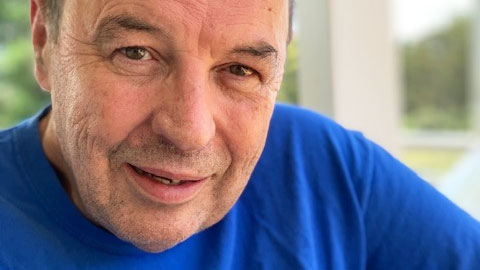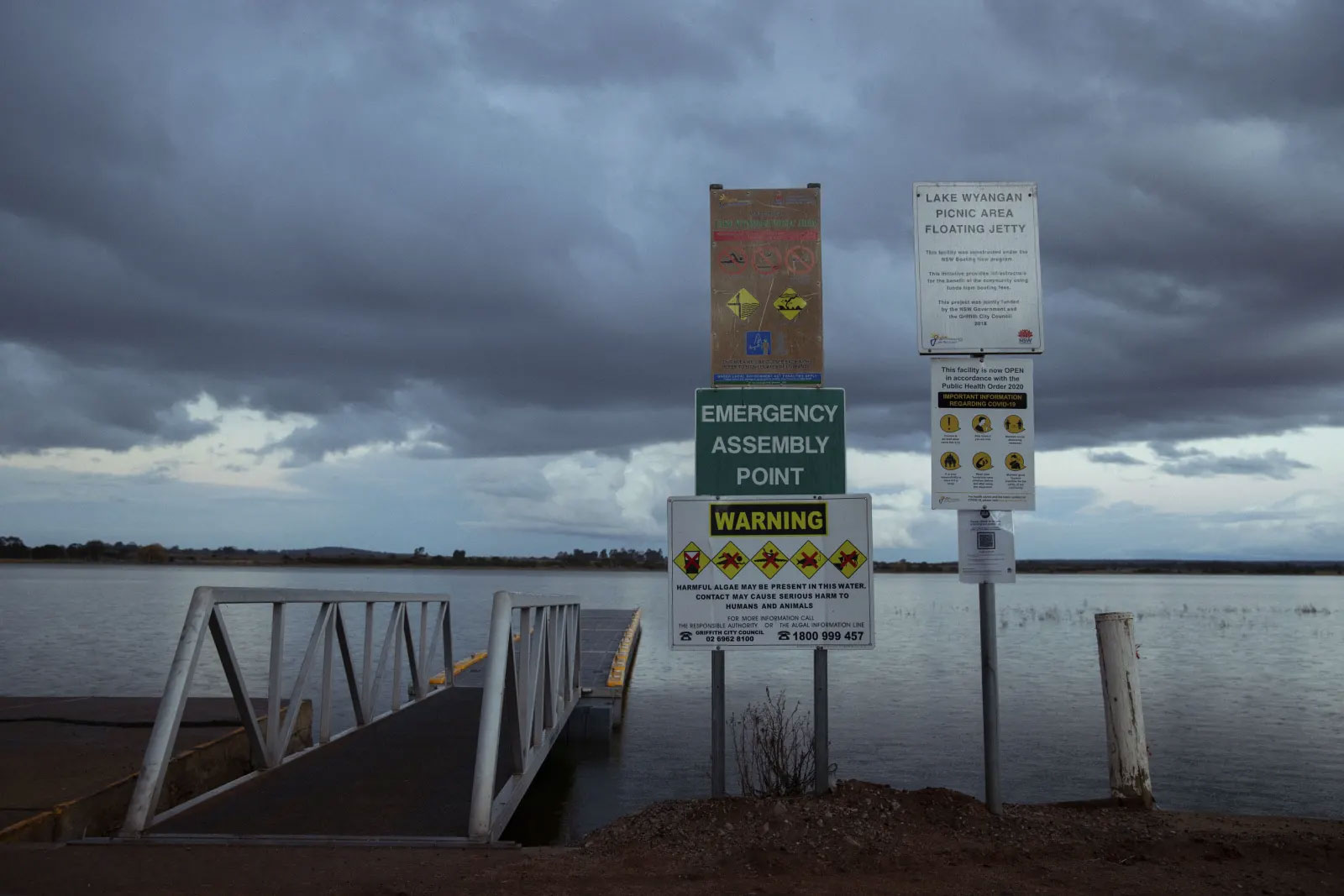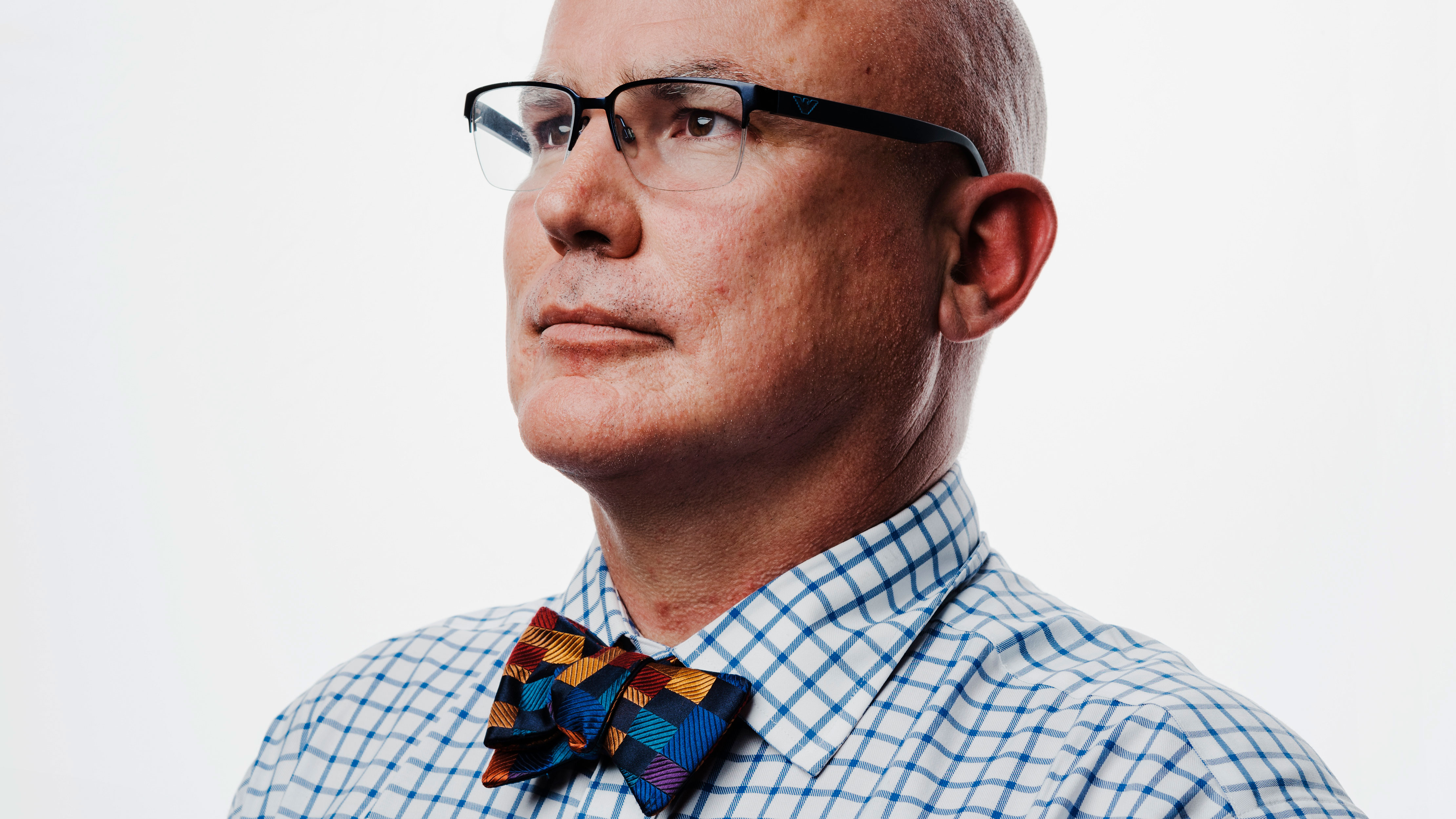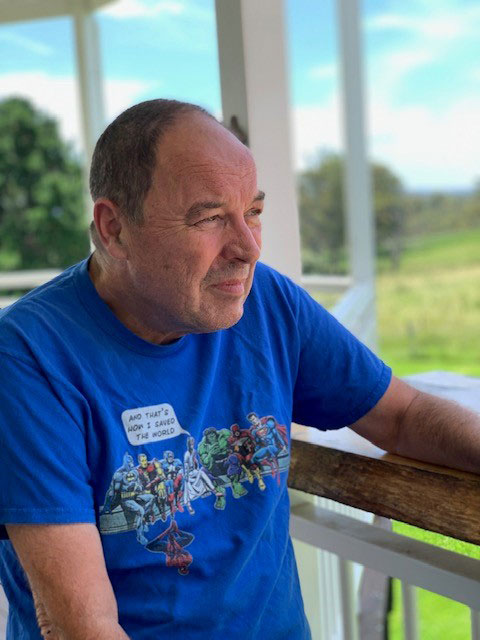It was the pinky finger on Peter Riley's right hand that made him realise something was wrong.
It was jutting out to the side and he couldn't bring it back into line.
Looking back, there were other signs too.
Despite being reasonably fit and active, the 64-year-old, from the Illawarra region on the New South Wales South Coast, was feeling wiped out after going on walks or climbing stairs.

At an appointment with a neurologist, Mr Riley's wife, Beth, noted the shape of his bottom had changed.
The neurologist then examined Mr Riley's back and saw muscles twitching all over it.
After a raft of tests, a diagnosis was confirmed - motor neurone disease (MND).
The progressive neurological disorder is terminal and slowly robs sufferers of the ability to walk, speak, swallow and breathe.
The number of people in Australia dying from MND has increased by 250 per cent over the last 30 years and the disease now accounts for the deaths of 800 Australians every year.
In 1986, likelihood of dying of motor neurone disease in Australia was one in 500.
In 2016, it was one in 180.
While about 10 per cent of MND cases are genetic, what is causing the vast majority of the disease, and its growth, is still a mystery.
But scientists strongly suspect environmental factors are at play and have been researching blue-green algae, pesticides and heavy metals as potential contributors.
Professor Dominic Rowe, a neurologist at Macquarie University, is one of Australia's leading MND researchers.
He has been investigating possible clusters of MND around the NSW Riverina region.
Potential hotspots the Macquarie University team has flagged - as a result of observing a higher than expected occurrence of MND - include Lake Cargelligo in the state's central west, Lake Wyangan in Griffith and the Murrumbidgee River.
These are rivers and lakes which all have regular outbreaks of blue-green algae.

Dr Rowe said he had also noted several of his patients, including Mr Riley, who either lived, or had lived, near Lake Illawarra, where blue-green algae is also known to appear.
"It is a little bit difficult to make observations because of referral patterns but we have had several patients from the western shore of Lake Illawarra, which is where (Mr Riley) grew up," Dr Rowe said.
While the potential link between blue-green algae and MND is still hotly debated in scientific circles, overseas studies have made the connection.
"In France, there is the main lagoon near Montpellier. If you live on the western side of that lagoon, within five kilometres, you have a three-to-fivefold increased risk of motor neurone disease," Dr Rowe said.
Better data could unlock mystery
One of Dr Rowe's greatest sources of frustration over the years has been a lack of complete data when it comes to MND cases in Australia.
This is because MND is not a notifiable disease, meaning doctors are not required by law to notify health authorities when they make a diagnosis.
People with MND are instead registered through an opt-in national registry or state-based organisations.

Dr Rowe has been campaigning for years to have MND made a notifiable disease.
"We strongly suspect that this disease has an environmental element that we are yet to define," Dr Rowe said.
"The problem is, until we know who has the disease and where they are, we are just making observations that are based on best guess rather than true data."
Notifiable diseases are traditionally communicable viruses which pose a high risk of community outbreaks.
However, there are many other exceptions including cancer, the industrial lung disease silicosis and degenerative neurological condition Creutzfeldt-Jakob disease which are included on the list of notifiable diseases.
Dr Rowe said he and his colleagues had a promising meeting with NSW Health authorities earlier this year, but the latest COVID-19 wave appeared to have derailed discussions.
Dr Rowe said the irony was the number of deaths from COVID-19 and MND last year in Australia were almost the same.
"Last year in Australia, 900 people died from COVID; 80 per cent of them were in aged care or in their 80s," Dr Rowe said.
"During the same time, 800 people died from motor neurone disease.
"Meanwhile, we have QR codes and check-ins and all different sorts of sophisticated methods for monitoring COVID-19, understandably, for public health reasons.
"We should be able to (make MND a notifiable disease) in this day and age, and it shouldn't be a big stretch."
A spokesperson for NSW Health said MND cases without a familial link were thought to be caused by a combination of genetic, environmental and lifestyle factors.
"Despite extensive and ongoing international research there is currently no firm evidence that any particular factor causes MND," the spokesperson said.
"NSW Health does not support making MND a notifiable condition under the Public Health Act at the current time.
"Many issues must be considered before making a condition notifiable, but generally a specific public health response should be necessary to protect the health of the community.
"NSW Health monitors the rate and distribution of non-notifiable diseases using routinely collected hospital admission and mortality data and uses this information to make evidence-based decisions."
NSW South Coast cluster?
Mr Riley, Dr Rowe's patient from the Illawarra, recently started an online petition calling on the NSW Government to make MND notifiable, which has so far attracted more than 10,000 signatures.
A scientist and researcher by profession, Mr Riley said he immediately understood the need for a proper Australian data set for MND.

While Mr Riley has since moved from the Lake Illawarra area, he said he was also struck by the number of people he knew with MND from around where he used to live.
While motor neurone disease affects about nine in 100,000 Australians, Mr Riley said he personally knew three people from his hometown who had MND.
"Considering I probably know a maximum of 1000 people in the town where I come from, that number seemed a bit high," Mr Riley said.
"I actually put a question up on a Facebook group associated with the town. I said, 'This is a bit weird, I know of three people in the town with MND. Does anyone know anyone else?
"I got over 10 people in the same area who responded."
It has now been two-and-a-half years since Mr Riley's diagnosis.
During that time, he has gone from working four days a week to being reliant on his wife and carers to meet many of his day-to-day needs.
He is hooked up to a BiPAP breathing machine for about 20 hours a day and is unable to drive or walk very far.
"I have gone from being quite a useful handyman to not being able to hold a hammer anymore, let alone swing it," he said.
"I love tinkering in the garage and the last thing I was able to build was a dolls house for my granddaughters."
Losing his independence had been confronting, he said.
"There are days where I don't want to get out of bed, but it's like a rollercoaster in some ways, you can't get off no matter how much you want to, you have got to ride it to the end."
Mr Riley said he was grateful, however, that his disease had not progressed as quickly as some other unfortunate people he knew.
"I thank God every day that I am not as bad as I thought I would be," he said.
Contact reporter Emily McPherson at emcpherson@nine.com.au.
